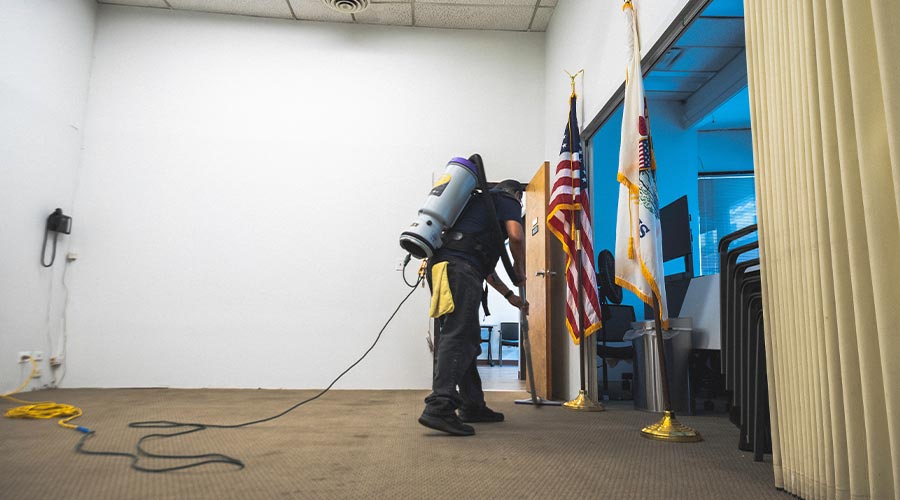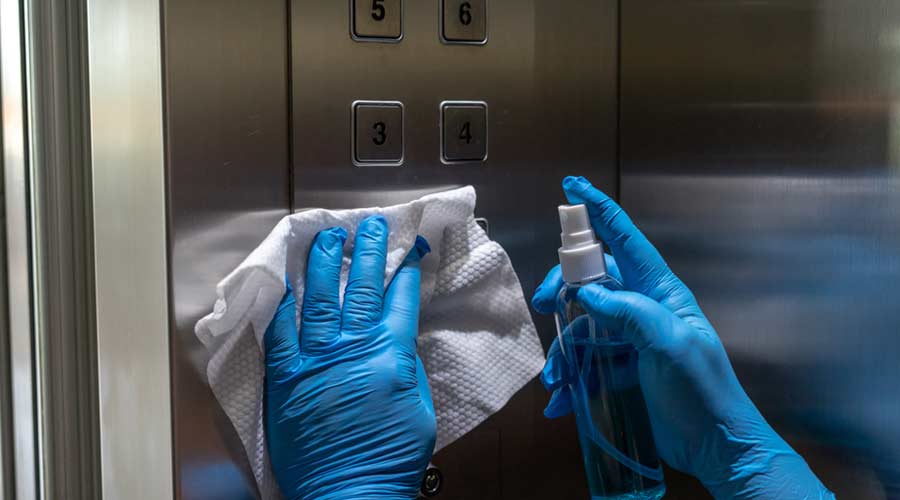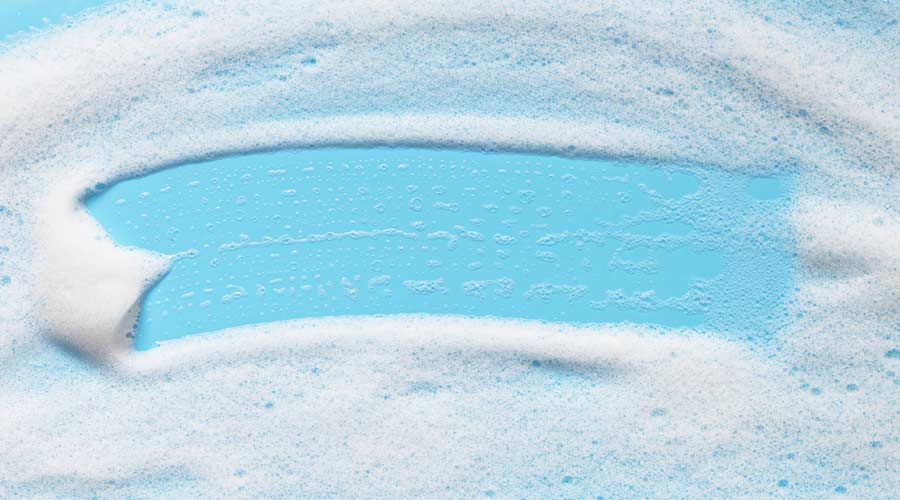
In recent years, a growing number of cleaning teams have made the switch from traditional upright vacuums to backpack options. This shift is largely driven by the efficiency and cleaning gains that backpacks can provide. It makes sense, with a backpack vacuum, teams can cover more ground, cleaning up to 10,000 square feet per hour compared to just 4,500 square feet with an upright model, according to Allen Rathey, founder of the Indoor Exposure Index (INDEX) and director of the Indoor Health Council (IHC).
The lightweight and portable nature of recent designs can make it easier for the frontline worker to maneuver in tight spaces. Innovative ergonomic harness systems promise to lower strain on workers' shoulders, backs, and necks, while lighter construction materials have reduced the overall weight of these systems.
As a result, facility cleaning managers frequently choose backpack vacuums, particularly when prioritizing cleaning speed.
However, this doesn't mean backpacks should replace upright vacuums entirely. Both types of vacuums have their place in the cleaning world and knowing when to choose one over the other is key.
“No vacuum is the be-all, end-all,” says Rathey. “It depends on the surface, the operator, and the overall system.”
Capitalize on Clean
The primary goal of vacuuming is to clean. Unfortunately, as Rathey notes, many vacuums fall short of this.
"If you’re not cleaning, you are polluting,” he stresses. “Too many vacuums do some cleaning and some polluting."
This is especially true if a vacuum stirs up dust rather than removing it. If a vacuum is blowing or distributing dust particles, it isn’t really cleaning. It is polluting by allowing fine particles to become airborne.
A good example is a beater-bar-equipped upright vacuum being used on cut-pile carpeting. These carpets, with their higher pile, hold more dirt, which gets stirred up by the beater bar. The vacuum’s larger orifice may lower airflow, and without enough suction, it can drive dirt into the air.
“If the airflow and suction ratios are not correct, you will not have the airflow to overcome the beating action that stirs up dust so that you can vacuum it up. This results in a process that pushes super-fine dust into the air where it may stay for some time,” Rathey explains.
To improve cleaning, many upright vacuums now have two motors: one for the brush and one for suction, providing more airflow when agitating carpet fibers. Meanwhile, many corded backpack vacuums with suction-only tools push enough air through the filters to remove and retain more dust from commercial-loop carpets than uprights.
“These systems can remove more fine dust,” adds Rathey, “because the air flow is significantly higher at the interface between the tool and the carpet."
To provide the cleanest environments, experts suggest a higher-airflow backpack or canister vacuum. When paired with a power head that offers some agitation, these machines can effectively capture dirt and debris.
“However, switching over to a power head takes time, and time can be an issue for cleaning teams,” Rathey stresses.
For this reason, he recommends using an upright vacuum with a beater brush on entrance matting and cut-pile carpets to help ensure thorough cleaning. Then departments should employ a backpack vacuum for sizeable areas of closed-loop commercial carpet.
“There’s no one-size-fits-all option with vacuums,” says Rathey. “Different vacuum types exist because they serve specific purposes.”
However, he also points out that battery-powered backpack vacuums with suction-only tools — while less powerful than corded models — can enable access to more areas and quickly yield potentially better outcomes.
Ample Options
A powerful canister vacuum with a larger motor might be ideal for one cleaning situation, while a backpack vacuum may be better suited when a worker must handle multiple tasks simultaneously. Alternatively, an upright vacuum might be the best choice when dealing with extensive cut pile carpet.
David Thompson, owner of the Academy of Cleaning Excellence, suggests facility cleaning managers ask two key questions when spec’ing a vacuum.
1. What needs to be accomplished? What must be achieved when vacuuming the carpet?
2. Will this vacuum achieve the desired results?
The answers to those questions, Thompson says, will determine the type of vacuum to use.
For example, backpack vacuums can speed up the cleaning effort, which makes sense when cleaning teams seek a quick clean. However, he suggests a smaller cleaning department might want to invest in vacuums that deliver the highest level of suction.
“When we only focus on how fast we can clean the carpet, we end up only doing surface cleaning,” says Thompson. “Our job is to clean the carpet, which can hold 10 times more soil than is visible. We need to ask ourselves if the vacuum being used delivers the desired results. If you are not removing the soil, your carpet will ugly out.”
Cleaning managers are also encouraged to choose a vacuum employees will want to use, including its ergonomic features, weight, filtration capabilities, and more.
“The employee doesn’t care what type of vacuum you use, but they do care that the unit is friendly to them,” Thompson says. “Your employee is the most important part of your cleaning service, bar none. Retaining that employee and keeping them healthy is your primary job.”
Most employees, he says, want a vacuum that will not strain their body or their backs. They seek a machine they can operate one-handed and move in any direction. One that works on any carpet, including mats, without many tool changes. They’d like a vacuum without bags, filters or exhaust being pushed into their breathing spaces.
Rathey recommends also considering the vacuum’s weight. Equipment that features newer plastics and composites will be lighter and more maneuverable. Older metal options can weigh 30-to-40 pounds, whereas vacuums made of plastic composite weigh 6-to-11 pounds.
He also recommends brushless motors, with higher performance and efficiency, while reducing noise and wear for greater durability.
“Combining lighter materials with stronger motors enables greater applied airflow and more robust multistage filtration,” says Rathey.
When it comes to functionality and employee preference, there are pros and cons to both corded and battery-powered equipment. Vacuums that use lithium-ion batteries can make operation more practical. They are generally less powerful than corded models, though they partly make up for it with more mobility and access.
Rathey recommends when opting for battery-powered systems, choosing the longest battery life available and purchase replaceable and interchangeable battery packs so that fully charged batteries are always available when needed. He also recommends considering a Carpet and Rug Institute (CRI)-certified vacuum. All CRI vacuums have been tested for soil removal, carpet appearance and wear, and indoor air quality.
“A carpet is a sink. Once that sink gets full, it starts to overflow,” he says. “The goal of vacuuming is to empty that sink without pushing dust into the air.”
Training Helps Make the Most of Vacuum Power

 The Down and Dirty on Cleaning in Virus Season
The Down and Dirty on Cleaning in Virus Season How Surfactant Use is Expanding in Commercial Cleaning
How Surfactant Use is Expanding in Commercial Cleaning Maximize Your Margins: Learn How to Automate Pricing and Track Rebates
Maximize Your Margins: Learn How to Automate Pricing and Track Rebates